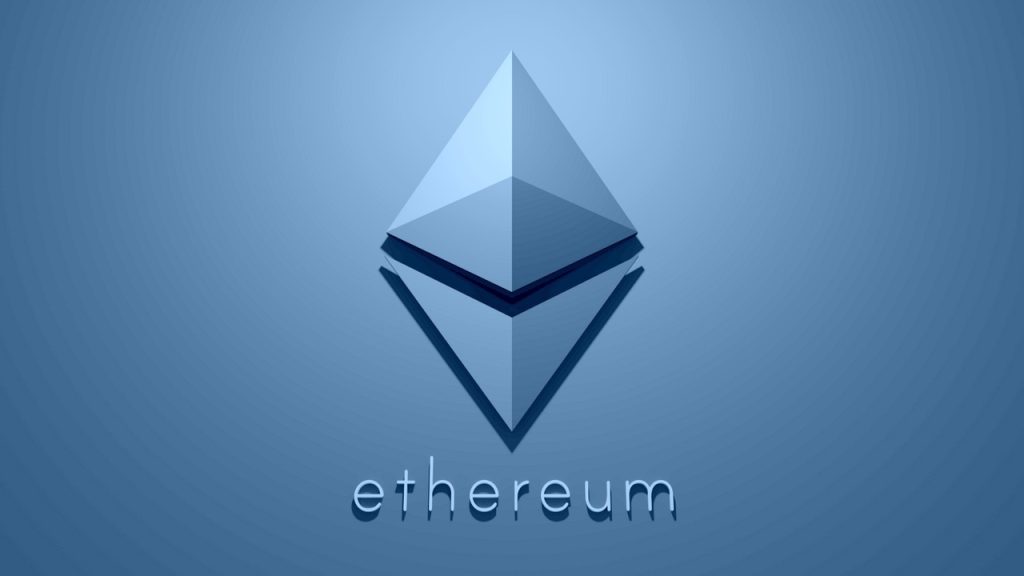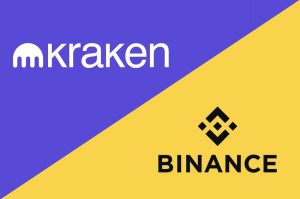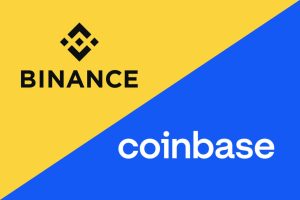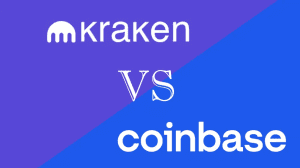What Is Ethereum? – Beginner’s Guide

You might be familiar with Ethereum due to its native Ether, the second-largest cryptocurrency by market capitalization after Bitcoin. But it’s actually so much more than that. It’s also a decentralized blockchain platform where anyone can develop applications without centralized third parties – a decentralized internet.
If you’re looking for more information about Ethereum, you’ve come to the right place. This guide explains everything you need to know using non-technical, easy English. Once you finish reading it, you’ll have a clear and complete grasp of what Ethereum is and how it works.
Ethereum Summary
Here are the key takes covered throughout this article:
- Ethereum was conceived in 2013 by Vitalik Buterin.
- The initial release was in July 2015.
- It’s a decentralized blockchain platform that supports smart contracts.
- The native Ether (ETH) is the 2nd largest crypto by market capitalization.
- Anyone can create decentralized apps on the platform.
- It’s the blockchain of choice for developers and enterprises.
Ethereum Explained
Vitalik Buterin is a programmer who took an interest in cryptocurrency at an early stage, co-founding Bitcoin Magazine. He first discussed Ethereum in a white paper in late 2013 and described how to build decentralized applications.
You see, the Bitcoin blockchain only supports the bitcoin cryptocurrency and is only used to handle its transactions. Buterin suggested introducing other applications and assets on the blockchain, such as property or stocks, and using it for more transactions other than money.
But after failing to reach an agreement, he set out to create a new platform with a stronger scripting language. And that’s how Ethereum was officially born in 2015.
The platform allows anyone to build decentralized, permanent, unchangeable applications without involving centralized authorities or intermediaries like banks or PayPal. Instead, participants are the decision-makers.
Ether
Ethereum is widely popular thanks to its native crypto Ether. In fact, some people often confuse them. Ether is the money used to cover Ethereum’s operational costs, i.e., computational resources, machines, cooling and storage systems, transaction fees, etc. Basically, it’s used for all transactions on the Ethereum network.
Programmers who run Ethereum on their computers get incentives. It’s similar to the reward system bitcoin miners get for maintaining the bitcoin blockchain. Furthermore, users who want to deploy a smart contract on the network must pay in Ether first. This ensures that programmers write efficient code.
Smart Contracts
Ethereum’s support of smart contracts means safe, tamper-proof data and assets. That could be money, property, shares, or anything digital you want to exchange on the network, and it’s all automated. Participants set the conditions using the “If This Then That” (IFTTT) logic, and if they’re met, funds will release automatically.
Anyone can create a smart contract, which essentially consists of the terms and conditions agreed upon between parties or peers.
The main feature of these smart contracts is they are permanent and unchangeable, even if you’re the author. So any transaction you complete cannot be altered.
And there are no centralized authorities to register any transaction. Instead, all the computers on the network carry out the verification process, which means the entire blockchain stores the data – further proof of transparency and no tampering.
The Ethereum Split
In 2016, a group of developers on the Ethereum blockchain formed a decentralized autonomous organization, or DAO, for short. DAO is a system that distributes decision-making, entity ownership, and management. And with a smart contract in place, There was no need for a CEO with complete power over Ethereum.
Instead, it was a democracy where each DAO member had an equal say, and they voted on network changes and ideas.
But due to a security exploit in the code, an unknown hacker managed to steal $40 million from the organization. To reverse the theft, most members voted on separation from the old network and taking another way, i.e., upgrading to a new protocol. But a small minority decided to stick with the original blockchain.
Therefore, there was a “hard fork” or split. The new, upgraded version kept the name Ethereum, while the original became Ethereum Classic.
Ethereum 2.0
Ethereum 2.0 is a series of upgrades to make Ethereum much faster, less expensive, and more scalable. It marks the transition from the proof-of-work model (mining) to proof-of-stake (staking).
Because mining consumes a lot of energy, the new upgrade replaces miners with validators: participants who help secure the network and validate transactions. And to become a validator, users must stake at least 32 ETH. As a reward for their efforts, they receive rewards on their staked tokens.
The logic behind all of this is that those who stake or risk their tokens have the Etehreum’s best interest at heart because they want it to succeed. And if someone has malicious intentions, they will lose their 32+ ETH.
The switch to Ethereum 2.0 and proof-of-stake reduces scalability issues through sharding. The latter is similar to cloud computing, where several computers handle the workload to minimize computational time.
Through sharding, transactions spread across smaller blockchain networks that users with weaker hardware can run instead of handling the entire network. As a result, more validators will have access to Ethereum, which reduces congestion and workload.
Benefits and Applications
The Ethereum network offers much more than just crypto transactions. The features we previously discussed are applicable in the real world and would be hugely beneficial.
Decentralized Finance
One of the biggest Ethereum achievements and real-world applications has to be the development of decentralized finance (DeFi) apps. Unlike banks and brokerage firms, DeFi allows the peer-to-peer digital exchange of funds, eliminating third parties and centralized authorities. Therefore, there aren’t any commission fees like your bank charges.
Anyone with an internet connection can use DeFi applications. Also, you store funds in a secure digital wallet and can transfer any amount within a few minutes.
As a result, decentralized finance has become hugely popular over the years, with most apps being developed on the Ethereum network.
Contracts and Agreements
Traditional contracts are susceptible to tampering, fraud, and dispute. Ethereum’s smart contracts, on the other hand, are written in computer code. It means they are permanent and unchangeable once created. And the best part is that everything is automated.
If X party delivers the work on time per the terms and conditions, they will automatically receive payment from Y party.
Voting
Corruption can occur even in the world’s leading democracies. How many times have we heard about altered ballots and vote tampering? Deploying the Ethereum network would fix that once and for all.
Voting through the Ethereum blockchain eliminates fraud and interference because no centralized entities are in charge. Furthermore, changes are logged on the entire network, and poll results are publicly available to everyone.
Gaming
Video games and virtual reality worlds use the Ethereum network to make in-game purchases. Decentraland, for example, allows you to buy and own items like skins, avatars, properties, trading cards, and maps faster and more securely through the blockchain.
NFTs
Non-fungible tokens, better known as NFTs, are unique digital identifiers that cannot be copied. They can be anything digital, like music or drawings, downloaded and turned into AI, but a lot of the hype is about selling digital art.
Most NFTs are created mainly using Ethereum. Each asset gets a specific token to identify and store on the blockchain, and the encrypted data logs the owner’s wallet address, which proves they own the token.
You can sell or trade your NFT on the blockchain. When the network verifies the transaction, the ownership transfers to the buyer/receiver.
Frequently Asked Questions
Check out more information about Ethereum.
How to buy Ethereum?
You can buy the Ethereum token ETH from a cryptocurrency trading platform. Several dedicated exchanges support Ethereum, like Coinbase, Kraken, and Binance. To buy crypto, simply
- Choose a crypto exchange
- Fund your wallet
- Select Ethereum
- Click buy
How much is 1 ETH worth?
At the time of writing, one Ether token is worth approximately $1,670.
Can I convert Ethereum to cash?
Anyone who owns ETH can convert the tokens to cash using exchanges like Kraken, Gemini, and Coinbase. To do so, you must:
- Create an account with the exchange platform
- Link your bank account
- Send ETH to your exchange account from an Ethereum wallet
- Click sell
- Transfer the amount to your bank account
What’s the difference between Ethereum and Ether?
Ethereum is a blockchain platform that supports decentralized applications, including cryptocurrencies. Ether is its native crypto token.
What’s the difference between Ethereum and Bitcoin?
In terms of cryptocurrency, Bitcoin is the largest token by market cap, while Ether is second. As for blockchain technology, the Bitcoin platform only supports its native cryptocurrency and is only used to handle its transactions. Meanwhile, Ethereum is a blockchain platform that supports decentralized applications and runs smart contracts.
Ethereum Guide Final Words
Ethereum is so much more than a blockchain for Ether token transactions. It is also a platform for creating decentralized apps and transforming how we go about everything online. It eliminates the need for centralized authorities and intermediaries and can be integrated into real-world applications.
There are a couple of drawbacks, like scalability and accessibility, but the introduction of Ethereum 2.0 will supposedly take care of these issues.
But does that make Ethereum a safe investment? Well, crypto trading (trading in general, actually) is always a risky business because the industry is volatile. Therefore, make smart choices and don’t invest more than you can afford to lose.






5 thoughts on “What Is Ethereum? – Beginner’s Guide”